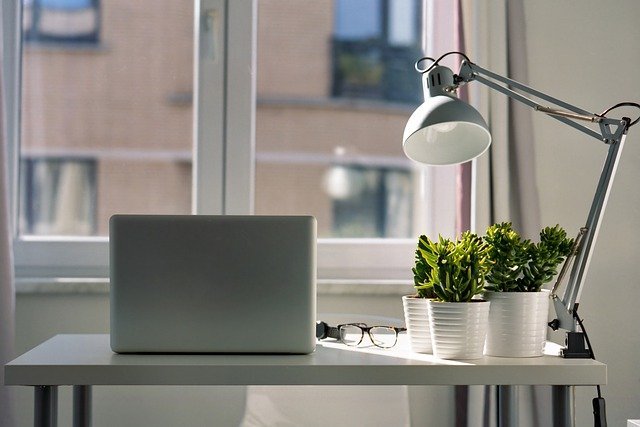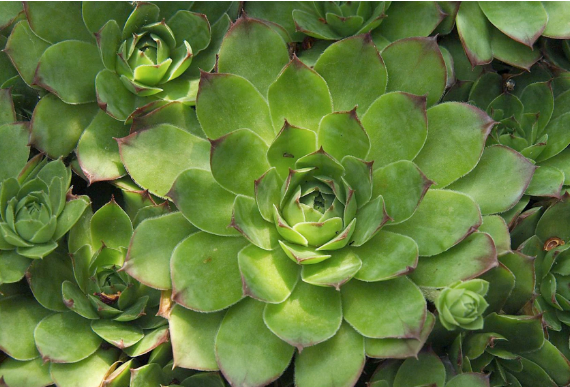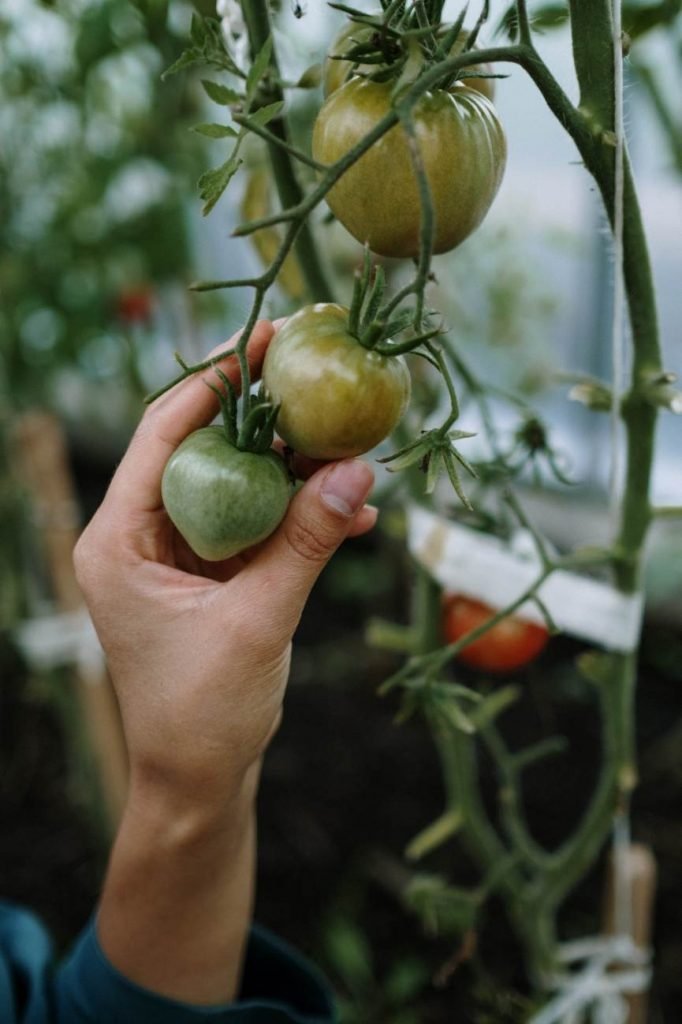
When you lack space outside, or if you simply want to extend your green spaces into the house, the indoor Vegetable garden is the ideal solution. The idea is to dedicate a space in your home to the development of a garden, or to transform a small room into a veritable corner of greenery by scattering a few touches of green.
From an aesthetic point of view, an indoor garden is obviously a real plus for the house, bringing colors and greenery for a wild aspect in the home. Moreover an edible indoor vegetable garden will also give you a sense of achievement when harvesting the crops you plant yourself.
Creating an indoor garden at home or indoor garden at apartment is by no means a difficult task and it doesn’t take too many things. To give you an idea, your balcony or terrace does not need to be more than 2 m². you just have to choose the vegetables and fruits well depending on the season and remember to water with the necessary frequency . In fact, if you don’t have a balcony or terrace, you can even plant some fruits and vegetables in a pot . Of course, you must have hours of direct sunlight on them.
But, even though indoor vegetable gardening is a simple hobby to start, it also comes with its limitations.
Table of Contents
Why do you want to grow vegetables indoors?

In case you didn’t know, growing your own food at home (in whatever quantity) helps to reduce your carbon footprint on the environment and makes the fruits and vegetables you get free of pesticides and other chemicals. In addition, the flavor of this type of harvest is usually more intense and rich than those fruits and vegetables that we buy in supermarkets. so indoor vegetable garden can be important thing to do to help to slow the climate change.
Not only those, there are some other advantages of having an indoor garden especially for vegetable or fruit and also the disadvantages of indoor garden than conventional garden.
What is the benefit of an indoor vegetable garden?
I will say a lot if you have to ask me, but here are some which give you more insight on what are the benefits of having an indoor vegetable garden.
- Gardening is a source of pleasure and well-being. When we trace back to the old day, when everyone had their own garden or vegetable patch and grew their own vegetables. gardening was the guarantee of good health , regular physical exercise and a balanced and healthy diet . A real concentrate of well-being! However, the more the lifestyle becomes urban and the living areas reduced, the more complicated it seems to have your own outdoor garden. And yet, the benefits remain the same. Taking care of your garden is a calming activity ,Having plants at home is a way of reconnecting with nature , even in the city, and it gives you unparalleled well-being. And nothing is any more gratifying to see one or more plants growing in your home, a plant that could not have grown without your good care.
- It can help you produce your own organic vegetable with no chemical intervention as in conventional gardening. Most people nowadays will take a lot less interest to know how the food they consume everyday is processed before it is served on their plate. we simply don’t care that much on how much chemical which might have contaminated our vegetable or fruit on their production process. Growing your own vegetable garden at home will simply help to reduce your dependency to processed food.
- Purifying and Humidification of the air indoor. Some plants help to keep the indoor air clean. They can – even to a small extent – absorb volatile organic compounds (VOCs) (harmful chemicals released from certain materials or products. Besides, plants in the house have a very favorable thermal effect in the summer. Plants give off water vapor, which helps to cool the indoor atmosphere. In this way, the plants create a natural air conditioning system, which allows the temperature to drop by a few degrees.
What is the disadvantage of growing your vegetable indoor?
Plants are living organisms, they can bring their share of inconvenience, which is more indoors. Unpleasant odors, insects, even fungi can thus infest green spaces, and therefore the habitat. Hence the need to be extremely vigilant when choosing to develop an indoor garden, maintaining it very regularly.
Here are some other things you should also consider before planning your indoor vegetable or fruit garden:
- Carbon dioxide : It is important to bear in mind that, in excess, having too many plants around us in the same room that we sleep can have important consequences on our health as they produce Carbon Dioxide at night. But, I highly doubt you will want your tomato plant to be next to your bed. Put them in other rooms and you can minimize the effect.
- Insects : Plants, due to their natural character, are prone to attracting insects of various kinds. If you do not like that, it may not be a good idea to decorate your home with plants. Although insects, in most cases, are very small, they can be very annoying for someone sensitive to their presence .
- Allergies : There are people who, for physical reasons, may have allergies depending on which plants. Before buying any, I advise you to be clear that you are not going to suffer any type of allergy problem , since it is true that it can be very annoying.
- Dirt : Dirt can only appear in cases in which we neglect the care of the plant for a few weeks , but it is not something usual . While it is true that a leaf or branch may fall, dirt can only be an inconvenience when you have a large number of plants in your home
How to start an indoor vegetable garden?

Starting your indoor vegetable or fruit garden will require the ability to completely control the environment inside your home to support your crops. Although it requires more work, it also greatly increases the growth of your plants when done correctly.
When starting out with indoor garden, here are some preparation you should consider:
- Choose the right space. The success of an indoor garden is based on the selection of an indoor space that helps the plants to grow. Choose an area with lots of windows and sunlight; usually east and west windows are the best. If possible, place your garden near a window to allow it to receive more heat and sunlight.
- Avoid rooms with cold temperatures (such as attics or garages); cold can kill or retard plant growth, while heat is generally better received.
- Avoid choosing an area near an air vent or fan, as these can dry out your plants and cause damage.
- Control the environment properly. These can vary slightly depending on the garden system you use and the plants you decide to grow, but there are some useful tools to control the environment more easily.
- Try using heat mats on the floor. In general, most plants thrive when the soil temperature is between 75 and 85 ° F (24-29 ° C). You probably don’t want the entire temperature in your house to be this high, especially in the winter. To remedy this, you can buy electric mats made to heat pots from the bottom and thus regulate the temperature of the floor.
- Get a drip system. Regular watering can be a difficult habit to master; Instead of reminding yourself every day, try to get a drip system. This works with a series of small tubes that go to each plant and a timer that activates or deactivates the irrigation mechanism for a specified time every day.
- Choose a lighting system. Although windows do let in some sunlight, you will need to light your plants with artificial means. Fluorescent light tubes are the best option as they are cost effective and give good results. Otherwise, you can buy a special heat lamp for growing plants indoors
- Choose your plants. Like an outdoor garden, there are a wide variety of plants that can be grown indoors, including vegetables, berries, herbs, flowers, and decorative plants such as succulents. Before you go to the nursery and start picking attractive plants at random, you need to determine which plants will grow well in your garden. Some plants will flourish indoors, while others will have a lot of difficulty. Among the most popular plants that grow indoors we have:
- Vegetables: tomatoes, peppers, aubergines, carrots, radishes, beans, peas and mushrooms.
- Fruits: strawberries, figs and grapes.
- Herbs: basil, bay leaf, chives, oregano, parsley, rosemary, sage, tarragon and thyme.
Tips
- Since most indoor gardens are small, limit the number of plants. It is a temptation (especially if you grow plants from seed and get a lot of good quality plants) to clutter up your garden. Make sure to reserve enough space with good lighting for each plant. Ditch the weaker ones or give them to someone with hobbies similar to yours, and trim the overgrowth when necessary.
- Select disease resistant plant varieties. This will help keep your indoor plants in good shape.
- For some plants, you need to pollinate the flowers by hand, using a small brush, as there are usually no pollinating insects indoors.
- You can limit diseases and pests indoors by using neem oil. Neem oil is a plant-based oil extracted from neem trees (you can also buy it in its organic variety), which contains natural chemicals, similar to estrogens, that kill viruses, bacteria and fungi and make them plants are less palatable to pests.
- If you notice signs of disease or mold, it is best to dispose of that plant or at least all infected leaves immediately. Consider that it can be sad to drop a plant or two, but if the disease spreads, your entire garden could be ruined.

Gardening is my passion and growing plants indoors has always been a stress relief for me. Grow a banana tree in my apartment once (although failed to produce bananas).




